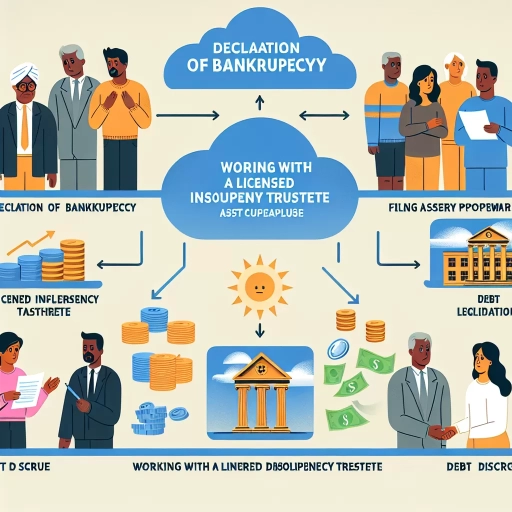How Bankruptcies Work In Canada

Understanding Bankruptcy in Canada: An Overview
Cause and Effect of Bankruptcy
Financial hardship is something that almost anyone can experience in their lifetime. There are numerous reasons why someone might contemplate filing bankruptcy in Canada such as job loss, business failure, costly medical issues, marriage dissolution, or simply poor financial decisions. Bankruptcy, while seen as a last resort, offers an opportunity for a fresh start for those drowned in debt. Legally, it discharges them from most, if not all, of their debts, giving them a chance to rebuild their financial standing. However, it comes with severe consequences such as damaging credit ratings, making it difficult to secure loans or credits in the future.
The Legalities of Bankruptcy in Canada
Bankruptcy in Canada is governed by the Bankruptcy and Insolvency Act. When you officially declare bankruptcy, you surrender everything you own to a Licensed Insolvency Trustee - who then sells these assets to repay your creditors. The process typically lasts about 9 months, after which you will be released from most of your debts. However, specific debts like child support, alimony, student loans (if it's less than seven years since you finished school), and fines or penalties from the court, cannot be eliminated through bankruptcy.
Alternatives to Bankruptcy
Before considering bankruptcy, it's important to explore other alternatives. These may include debt consolidation loans, debt management plans, debt settlement, credit counseling, and consumer proposals. A consumer proposal, for example, is a legal procedure governed by the Bankruptcy and Insolvency Act and is administered by a Licensed Insolvency Trustee. It allows for negotiations with creditors to pay back a part of what is owed, over a longer period or coinstantaneously changing the terms of the agreement with the creditor. Evaluating whether bankruptcy is your best option requires a comprehensive understanding of your financial situation and the potential consequences of each choice.
The Bankruptcy Process in Canada
Steps Involved in Filing for Bankruptcy
The bankruptcy process in Canada involves several steps. First, the debtor must meet with a Licensed Insolvency Trustee who will review their financial situation in detail. They assess your income, expenses, assets, and debt to see if bankruptcy is the best option. If it’s agreed that bankruptcy is the best course of action, the trustee will explain the process, the cost, and any possible alternatives. Once the necessary documents are signed, the trustee files them with the Office of the Superintendent of Bankruptcy (OSB) to initialize the bankruptcy.
Roles and Responsibilities of the Debtor
On filing for bankruptcy, debtors are required to fulfill certain responsibilities. This includes surrendering their credit cards, reporting their monthly income and expenses to the trustee, attending financial counselling sessions, and paying the trustee their required fees. Failure to meet these obligations can result in the bankruptcy being extended and the debtor might not be discharged from their debts.
The Role of the Licensed Insolvency Trustee
The Licensed Insolvency Trustee plays a vital role in a bankruptcy proceeding. The trustee is responsible for selling your assets, including property, vehicles, and non-essential home belongings. These funds are then distributed among the creditors. The trustee acts as an administrator and a mediator between you and your creditors, stops the collection calls, and helps you navigate through the bankruptcy process.
Life After Bankruptcy: Consequences and Recoveries
Credit Rating and Future Borrowing
Filing for bankruptcy can solve your immediate financial issues, but it comes with long-term repercussions. The bankruptcy will remain on your credit report for at least six years after your discharge, making it difficult to borrow money. This is why it’s important to start rebuilding your credit as soon as possible. Obtaining a secured credit card and making regular, on-time payments can be a good starting point.
Regaining Financial Stability
One of the most crucial aspects of life after bankruptcy is regaining financial stability. Post-bankruptcy, it’s essential to have a budget and stick to it. It’s also important to start building an emergency fund so you have money set aside for any unexpected incidents. Small steps can lead to positive and significant changes in your financial future.
Psychological Impacts
Bankruptcy isn't just a financial matter; it also heavily impacts your emotional state. Feelings of depression, guilt, shame, and stress are common in people who've declared bankruptcy. Attending counselling services and having a good support network can help you mentally and emotionally navigate post-bankruptcy life.